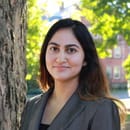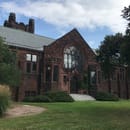” Sometimes, the only response to despair is hopefulness”
– Janaya Khan
On Friday October 13, 2016, Black Lives Matter Movement co-founder, Opal Tometi, and Black Lives Matter Toronto co-founder, Janaya Khan, came to Smith College to have a dialogue with each other, as part of Smith’s “When and Where I Enter Symposium”. The dialogue was moderated by Barbara Ransby, a historian and long time black liberation movement activist. I had the privilege to attend this event. Here’s what I learned about the Black Lives Matter Movement:
1. IT IS INTERSECTIONAL
Black Lives Matter is not a new movement; it is built on the legacy of previous black liberation movements. Many of its members have been civil rights activists for over a decade before and have had mentors who were older activists. To put that into perspective, some BLM activists have been rallying for equality since the Clinton administration in the 90s, and some older activists have been fighting for equality since the Reagan administration in the 80s. What sets BLM apart from previous black liberation movements is its inclusion of trans and gender issues. BLM was founded by women and focuses on equality for all black people, including those who are women, queer, trans, femmes, gender nonconforming, Muslim, formerly and currently incarcerated, cash poor and working class, differently-abled, undocumented, and immigrants. The movement itself is gender and trans lead. Janaya Khan, cofounder of BLM Toronto, is a queer and gender nonconforming activist. As Janaya put it, no one knows systemic prejudice as well as a black transgender woman. Because of the movement’s focus on intersectionality, BLM has been accused of “pushing a gay agenda” and “hating black men”.
Janaya Khan
2. IT HAS NO LEADER
The hashtag Black Lives Matter was first used in 2013, as part of a response to the death Trayvon Martin. It was originated by Alicia Garza, Patrisse Cullors, and Opal Tometi. The hashtag was inactive for a year until it was revived in 2014 during the protests for the Michael Brown shooting in Ferguson. In two weeks, 500 people organized themselves to come to Ferguson for peaceful protests. This demonstrated one of the biggest strengths of the BLM movement: its network. Opal described BLM’s structure as decentralized yet coordinated. There are 40 chapters of BLM across America, but there is no one national leader to guide them all. Each chapter organizes themselves and leads on the local level. By using this model, the movement can be “fluid and nimble”, as Opal described it, and able to approach multiple issues instead of just one. The media’s coverage of BLM tends to pigeonhole the movement and say that BLM is only concerned with the criminal justice system or policing. But in actuality, the movement is concerned with all aspects of the systemic oppression of black people, including (but not limited to) education and school systems, health care, voting laws, and social welfare. My first experience with BLM was related to racism on college campuses. In response to the events at the University of Missouri last year, students from Mount Holyoke College organized a walkout followed by an open mic for students of color to share their stories. By hearing those stories, I learned what a “white ally” was and I learned about the many fears people share such as fear that they, their siblings, and other family members will be shot by the police.
Opal Tometi
3. IT IS INTERNATIONAL
While the Black Lives Matter Movement’s home is in the US, leaders like Janaya and Opal deal with international delegations. The reason BLM focuses on international black issues, Opal explained, is because black people “are catching hell all over the world”. The movement supports and works together with other international liberation movements and activists. Before this dialogue, Opal had come back from Columbia where she had met with Afro-Colombian activists and was able to see how they organized and protested against corporations that were polluting the area. Janaya helped to put Palestine on the BLM platform, which was released earlier this year. Because it named Palestine, BLM was called anti-semitic. BLM also deals with immigration discrimination where black people from Africa are less likely to be given a US visa. According to Janaya, BLM must be international because the US is responsible for much devastation in the world.
When the event concluded, the moderator said, “ these conversations are always incomplete”. That could not be more true. I was able to learn much more from that dialogue than I could share in a single article. I learned many truths and nuances from this event and I plan to continue the conversation well into the future. But in order to continue the conversation, you first need to educate yourself.
To find out more about the Black Lives Matter movement, here is the BLM platform.
If you would like to learn more about Janaya Khan or Opal Tometi, here are their websites.
If you would like to write for Her Campus Mount Holyoke, or if you have any questions or comments for us, please email mt-holyoke@hercampus.com.


